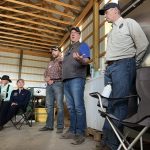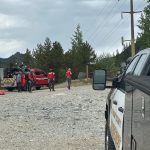How Colorado Parks and Wildlife’s top official is navigating the ups and downs of wolf reintroduction
Jeff Davis speaks on transparency concerns, how the agency is making wolf program decisions and more
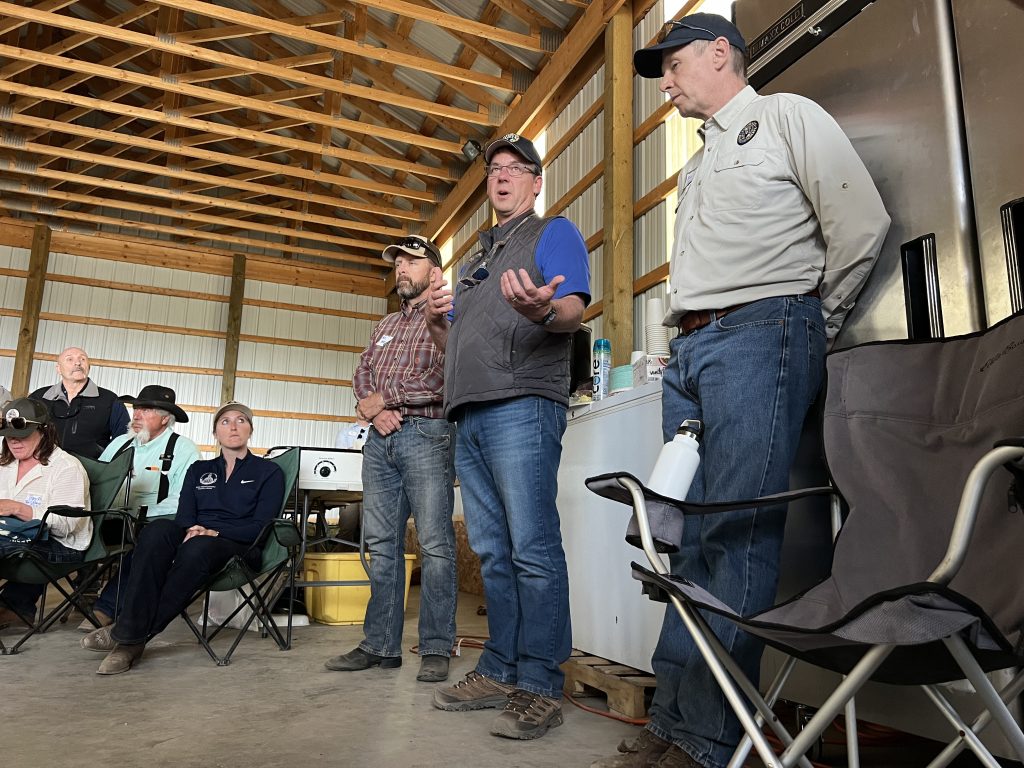
Elliott Wenzler/Summit Daily archive
Jeff Davis started as the director of Colorado Parks and Wildlife on May 1, 2023 — 244 days before the voter-mandated deadline for the agency to get wolves on the ground.
In his first Parks and Wildlife Commissioner meeting, the final wolf management plan was approved.
From there, the program has gotten up and running with the release of 10 wolves in December 2023 and another 15 in January. As the animals settled into Colorado, there have been wolf deaths, pups born and livestock attacks — all of which were anticipated with the reintroduction of a predator to its historic range. At the same time, the agency has received criticism for its decision-making, preparedness and transparency when it comes to wolves.
Now, as Davis hits around two years in his job, he is starting to open up his media availability with various outlets to allow for more frequent opportunities to discuss the agency’s work — something he has been, to his admission, “relatively inaccessible” for, with the expectation of big news events.
“That’s not intentional,” he added. “It’s really two years of coming in from out of state, joining a big organization and trying to figure it out. All the while, we’ve got wolves rolling out of crates and all the stuff that follows that.”
On Thursday, July 31, Summit Daily sat down with Davis to discuss all things wolf reintroduction — from what makes Colorado’s wolf program uniquely challenging, transparency concerns, how decisions are made and why he thinks a pause is not what the program needs.
The unique challenge of managing wolves in Colorado
Davis joined the Colorado wildlife agency after 25 years with the Washington Department of Fish and Wildlife. While Washington has had wolves for several decades, managing the animals in Colorado has brought a unique set of circumstances and challenges.
“One of the big differences, no matter how you look at it, is wolves wandered into Washington,” Davis said.
While the state still experienced and had to deal with the conflict, fear, pressure and management concerns that come with gray wolves, “Washington state had time as that population grew to develop a plan, have a wolf advisory group,” Davis added.
“The big difference here is that this was Prop 114, the will of the voters, turned into a state law, (which) had particular criteria and deadlines within the state law,” Davis said.
Challenges, therefore, came not from the biological considerations, but from lacking “time for that social evolution to prepare for the wolves,” Davis added.
This critique has been shared by many producers dealing with the impacts of wolves on the ground. When Prop 114 passed and became law, it required wolves to be released by Dec. 31, 2023. While state legislators attempted to push the deadline, Colorado Gov. Jared Polis vetoed the extension, forcing the agency to see it through. With this timeline, many ranchers have felt they did not have adequate time and resources to prepare for the conflict wolves can bring when they were first released.
Some of the challenges with the wolf program have led to agency-wide impacts, including hits to staff morale and in its work with all the other species it manages, Davis said.
“It has definitely, in some cases, impacted our ability to do some other wildlife work,” Davis said, specifically referring to the fact that many producers have begun shutting their gates to the agency. “That is going to have a pretty phenomenal impact on our ability to monitor threatened and endangered species, like sage grouse counts and things like that. We also do, in this state, a lot of deer, elk and sheep research, and shutting the gates will have an impact on our ability to collect that data as part of our research.”
So far, Davis said there has been a lot learned, adding “and we’ll continue to learn.”
Why Colorado needs to release more wolves
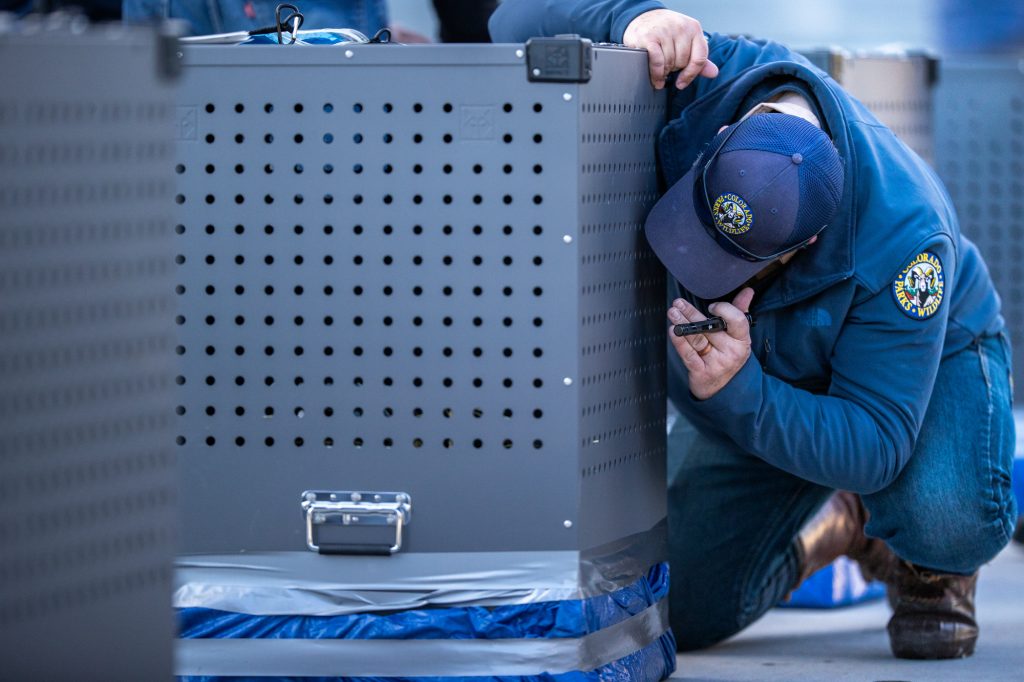
Since last fall, rising concerns with the program have caused producers, communities and lawmakers to ask Parks and Wildlife to pause the reintroduction of wolves to allow for conflict minimization programs to be more fully established. The agency and its commission have pushed back against these requests — including denying a petition from 26 organizations just days before wolves were brought from British Columbia.
The wolf plan recommends the agency release 30 to 50 wolves in the first three to five years of reintroduction to establish a sustainable population. Parks and Wildlife has released 25 in the first two years and plans to do at least one more year of releases.
“There’s a very important genetic diversity component to that,” Davis said. “Making sure that we do fall into that range of 30 to 50 is going to be important.”
Davis acknowledged the requests for a pause, but also the need to forge ahead and move past the reintroduction phase of the wolf program.
“I feel like every time we have a release, we’re ripping off a Band-Aid over an open bleeding wound already,” he said. “For me, it would be lovely to get that part done and then get to the management piece so that people don’t have to be worried all the time about where the next release is going to happen.”
Addressing concerns around a lack of transparency and communication
Since the reintroduction started, Parks and Wildlife has heard repeated calls from ranchers and lawmakers for better communication and transparency.
“I’m constantly looking up the definition of transparency in Webster’s dictionary because that’s hurled around a lot, not just at (Parks and Wildlife) in the wolf space, but just at government in general,” Davis said. “I think people have different definitions or expectations around that.”
When asked how Davis defines transparency, he said, “I feel like we’re being transparent.”
Communication is a topic that comes up at a meeting that Parks and Wildlife’s executive leadership team holds monthly with agriculture groups, Davis said.
Specifically, producers are asking for better communication about where wolves are located, to which Davis’s response is simple: “I can’t do that.”
“One, I can’t tell you specifically where they are because our GPS collars tell us where they were, not where they are right now,” he said. “The other part of that — and I know people don’t want to hear this — but there are safety concerns for the individual animals, but I would also argue for the landowners themselves in that space.”
As for the GPS collars — which record the wolves’ location every four hours and transmit the data to Parks and Wildlife every 16 hours or so — they are “some of the best we can get our hands on,” Davis said.
A single wolf can travel between 30 and 50 miles a day and even further if it is exploring new territory.
“The complicating factor is battery life,” he said. “If you turn up a frequency of reporting, you’re essentially cutting that battery life in half.”
A lower battery life means Parks and Wildlife staff would have to replace the collars more frequently, which requires darting the animal and not only poses safety risks to both the staff and wolves, but is costly, Davis said.
“We’re not leaving ranchers high and dry in that space and also trying to keep our operational costs as low as we can, especially in regard to collars and animal safety,” he added.
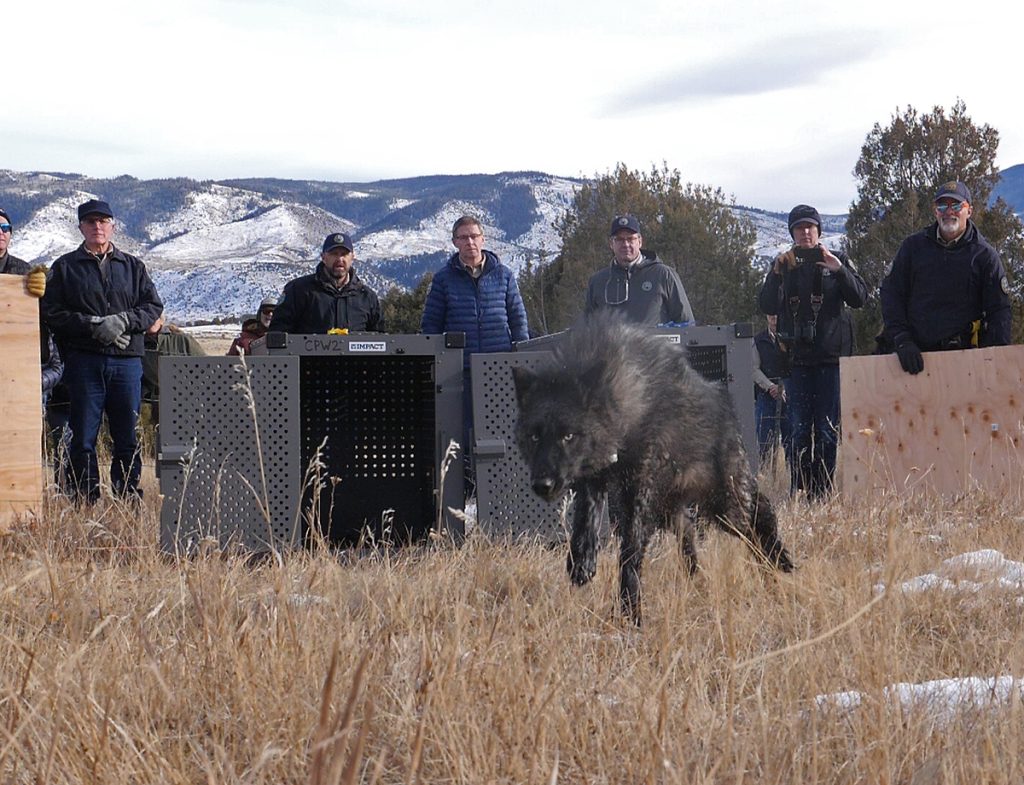
While concerns around transparency and communications were prominent during the January wolf releases, Davis said the agency made improvements from the first releases in 2023, where “we sent zippo to people.”
“This last year we had community meetings, we talked with county electeds and really tried to say, ‘Here’s the general areas that releases are being considered,'” Davis said. “This next year, are there improvements? Yes. Part of that will also be coming together and maybe restoring some of that trust, too, so that we aren’t passing information to someone that then blasts it out, and then we have a staff safety situation or safety of the animals.”
What role does Gov. Polis play in wolf management and decisions?
Often, concerns about transparency lead producers and lawmakers to question who is making decisions about wolves. Many point the finger at the governor’s office.
When asked about the concerns that the governor is influencing decisions, Davis said, “Civics is a really important thing to take in school.”
“Is (the governor) involved in driving decisions? No,” Davis said. “The state elected Gov. Polis as the state’s executive, and I work within that executive cabinet. So I do engage and brief the governor on all things (Parks and Wildlife: parks, incidents at parks or state wildlife areas, and definitely, wolves.”
In the conversations about wolves, Davis said Polis is “a science and data guy.”
“He asks really important questions, but it’s (Parks and Wildlife) that makes those decisions on how to move forward,” Davis said.
Decisions about wolves start with input from regional staff on the ground — including wildlife officers. biologists and regional management teams — and with headquarters including policy staff, biological leadership and the executive team, Davis said.
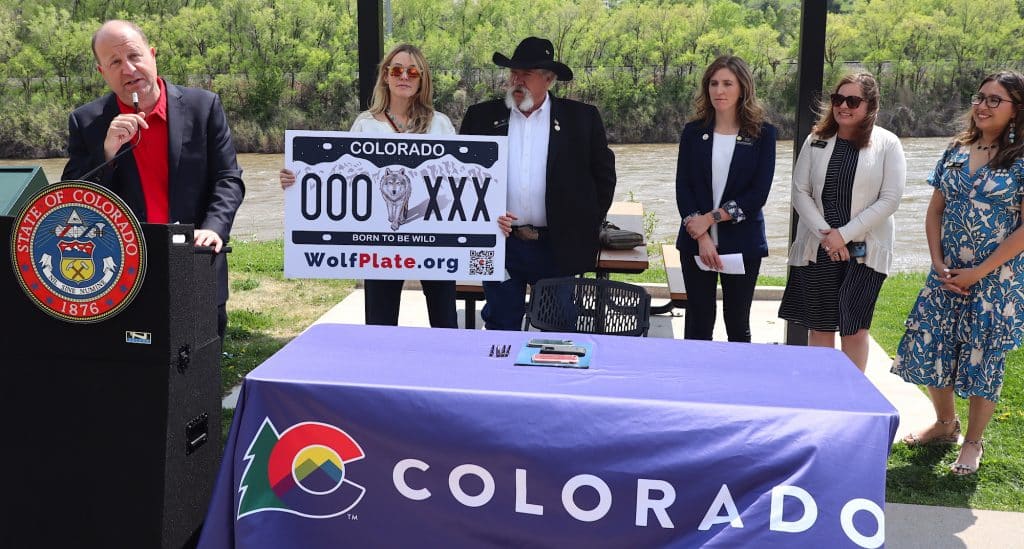
What will help bridge the divide caused by the reintroduction?
Despite challenges, there have been what Davis called “small victories,” not only biologically, but also socially with the program.
One of these was in the convening of an ad-hoc group in 2024 to help guide the agency’s creation of a definition for “chronic depredation.” The group had both conservationists and producers, and having them “interact with each other as people” was one of those small victories, Davis said.
“We see relationships still going strong coming out of that group, even despite the conflict feeling like it gets hotter and hotter,” Davis said. “And I think that that’s maybe a big piece that’s missing.”
Davis believes that solving many of the challenges and conflicts will come down to groups like this and figuring out: “How do we get constructive people in the same space to get to know each other and to really, truly seek common ground?”
“There’s a lot more common ground even in the wolf issue than we might recognize on face value,” he added. “Instead, we focus on where the disagreements are, and I think that’s elevating the conflict.”
One common refrain Davis said he hears from both wolf advocates and producers is more long-term, permanent funding for the state’s nonlethal programs and compensation, as well as additional conflict specialist capacity.
Currently, while Parks and Wildlife has received general fund allocations to run the program, many of the nonlethal tools and work for producers are funded by a patchwork of grants and external sources. This includes funds raised from the state’s Born to Be Wild wolf license plate, grants from the U.S. Fish and Wildlife Service, materials from the Rocky Mountain Wolf Project and other organizations.
Parks and Wildlife officials — alongside nonprofit, state and federal partners — have continued to work to build out the infrastructure and resources for Colorado producers to minimize conflict with wolves.
This has included adding staffing resources via range riders and wildlife damage specialist positions, who provide additional expertise for responding to livestock damage. It has also included defining chronic depredation and outlining what will cause the agency to step in and take lethal action against depredating wolves; and standardizing its processes for depredation response and for site assessments, which guide producers in implementing individualized conflict minimization tools.

Support Local Journalism

Support Local Journalism
As a Summit Daily News reader, you make our work possible.
Summit Daily is embarking on a multiyear project to digitize its archives going back to 1989 and make them available to the public in partnership with the Colorado Historic Newspapers Collection. The full project is expected to cost about $165,000. All donations made in 2023 will go directly toward this project.
Every contribution, no matter the size, will make a difference.




